Winning the Resume Game: How to Get Noticed and Land Your Dream Job!

A recent study by Glassdoor indicated that 98 percent of applicants are rejected based on their resumes alone.
It’s unfair, but it is how it is. So, how do you stand out from a list of 200 resumes fighting for the recruiter's attention?
That is why I’m writing this article.
The art of building a resume has evolved over the years. A decade ago, a simple resume covering the basics about your job worked, but not anymore. Recruiters get a massive influx of resumes and have seconds to decide whether you’re the right for the job. You’re passed on without remorse if your resume does not stand out.
In this article, I will share best practices to build an excellent resume.
Let’s get started.
Structure of your Resume
When creating an effective resume, simplicity is key. Avoid adding personal images or using colorful designs, as these elements do not enhance your resume's impact and might hinder its readability by Applicant Tracking Systems (ATS).
Focus instead on clear, straightforward content. The quality of the information you provide is what recruiters are primarily interested in, not your design skills. Stick to a basic, clean format that highlights your experience and skills in an easily readable manner. This approach ensures that your resume is both professional and ATS-friendly, maximizing your chances of catching a recruiter's attention.
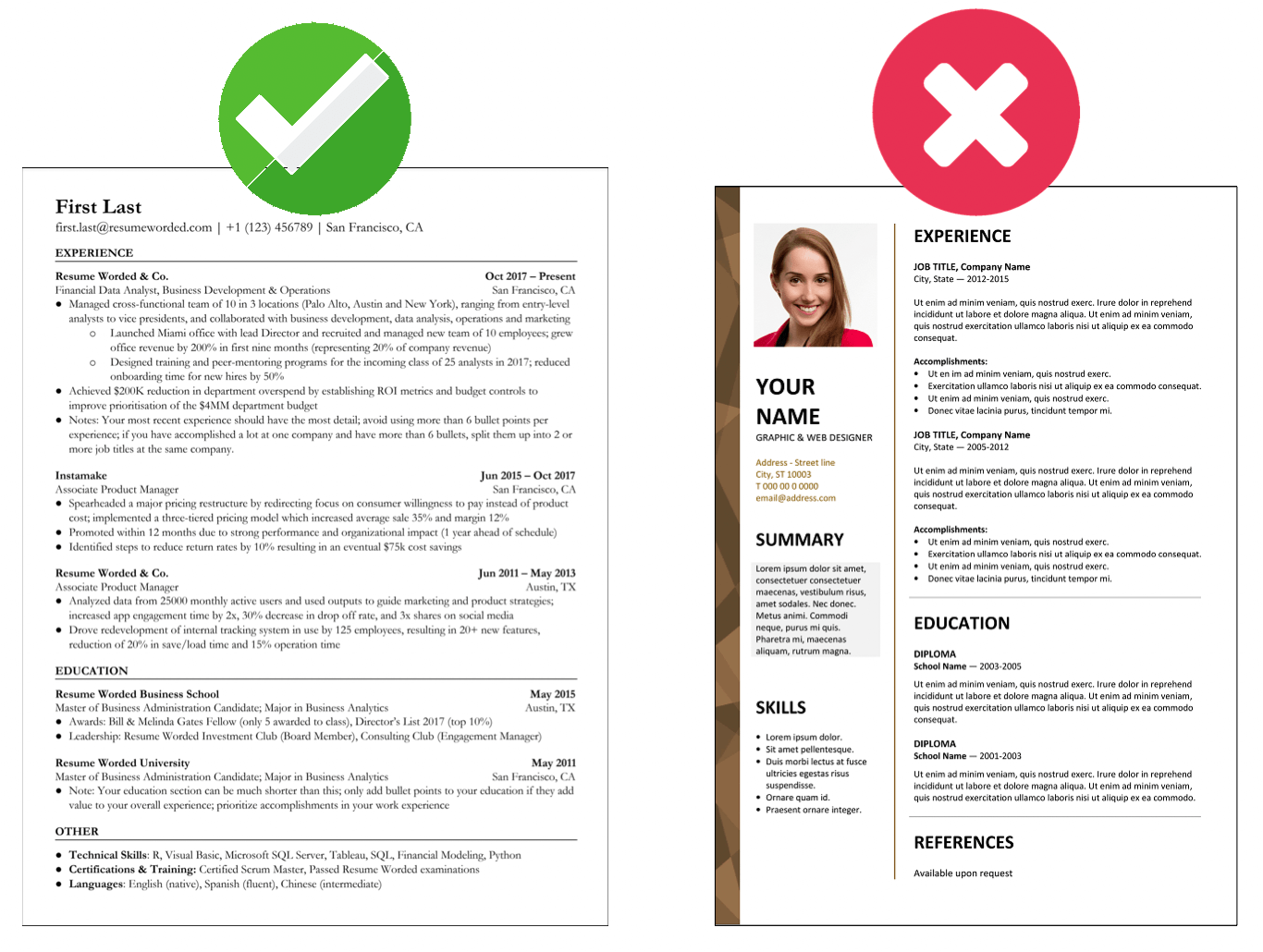
Heading
For a great resume, the heading should be straightforward and scannable. Refrain from adding your image or consuming unnecessary whitespace.
The ideal heading will include your name, email, phone number, and, if applicable, a link to your website or portfolio.
Avoid the use of fancy fonts and resist the temptation to include superfluous information. Keeping the heading clean and concise ensures that the most crucial contact details are immediately visible and accessible to the reader, making a professional and efficient first impression.
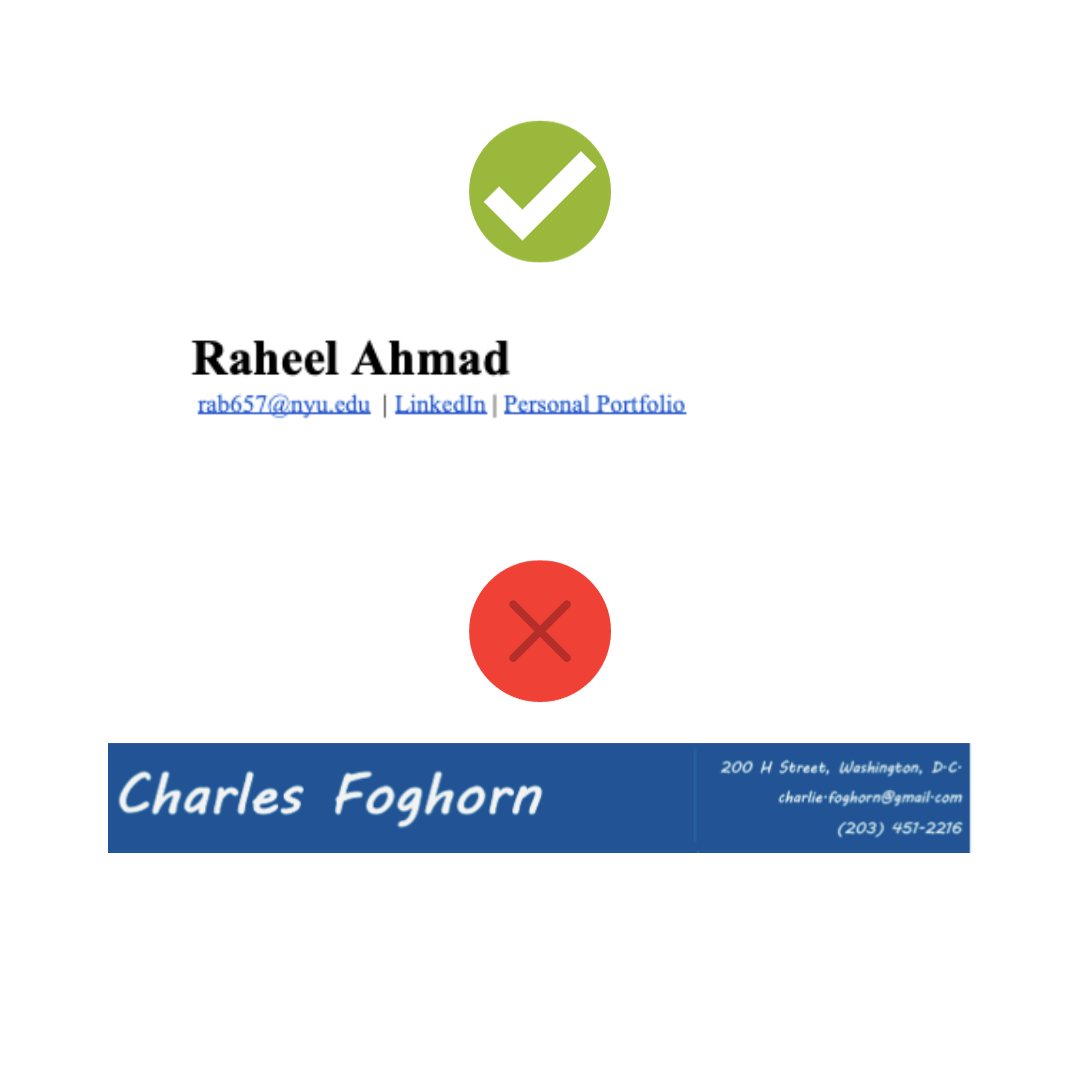
Experience
The work experience section is the heart of your resume, where recruiters look immediately after your name to gauge if you're a fit for the job.
When structuring the work experience section of your resume, adopt a clear and effective format for each bullet point by answering three key questions: “What did you do?”, “Why did you do it?”, and “What was the final result?” This approach helps you create bullet points that are both actionable and quantifiable.
- What did you do? – Start by describing the specific action or task you performed. Be precise and use active verbs to convey your role effectively.
- Why did you do it? – Explain the rationale or objective behind your action. This provides context and shows your understanding of the bigger picture in your role.
- What was the final result? – Conclude with the outcome or impact of your action, ideally quantified with numbers or data. For example, if you implemented a new process, mention how it improved efficiency or reduced costs.
For example:
- Wrong Way: “I run social media ads on Facebook for the company"
- Right Way: “Launched paid lead-generation campaign on Facebook for our new product line; bringing in over $100,000 in sales in just 14 days"
Contrast the two examples below. Which person will you hire?
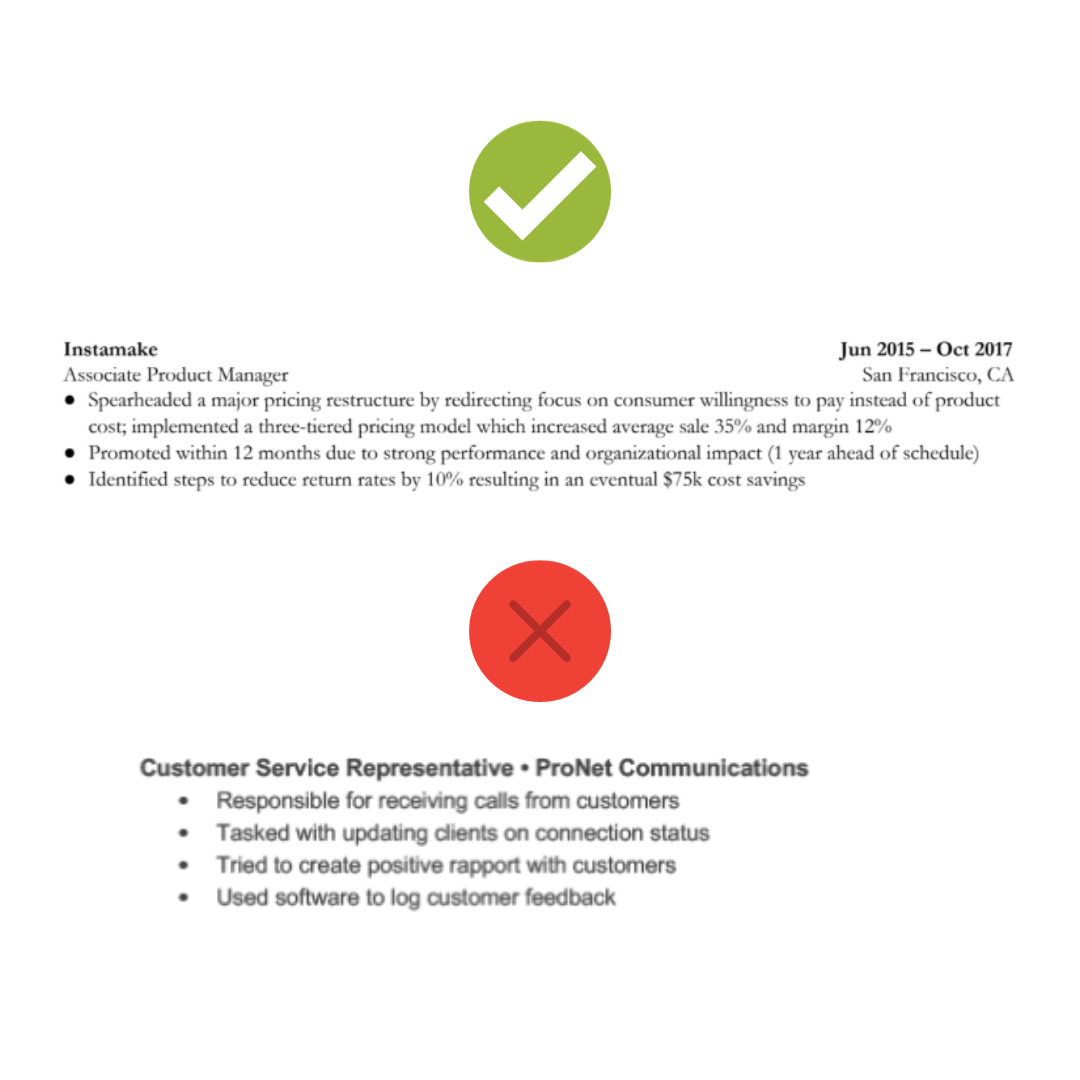
This format ensures each entry in your work experience is meaningful and results-oriented. It helps employers quickly understand not just what you did, but why it mattered and how it contributed to your previous organization's success.
By structuring your achievements in this manner, you create a compelling narrative of your professional journey and demonstrate your value proposition as a candidate.
Education
For the education section of your resume, the format should be clear and concise. Begin by listing your academic institution, degree, and the dates you attended. If your GPA is particularly high, include it as well. However, this section should extend beyond basic academic details, especially for those with limited work experience.
- Placement of the Education Section: If you're a recent graduate, the education section should lead your resume. Otherwise, it should follow your work experience.
- Highlighting Achievements: Instead of cluttering this section with every minor detail, focus on significant achievements. Did you rank at the top of your class for a year, or win a notable award? Such achievements demonstrate your hard work and dedication during your academic years.
- Relevant Coursework: If you weren't heavily involved in extracurricular activities, include relevant coursework that aligns with the job you're applying for. This shows your foundational knowledge in the field.
- For Tech Roles:
- Showcase Projects: Include any pertinent projects or contributions to open-source platforms. If you have a GitHub repository or a personal website, provide links to these resources.
- Certifications and Ongoing Education: Mention any relevant certifications or courses that you have completed or are currently undertaking. This shows your commitment to continuous learning and skill enhancement in the tech field.
By structuring your education section in this manner, you ensure that it's not just informative but also reflective of your strengths and relevant skills, particularly for those in the early stages of their career or in technical fields.
Here’s an example:
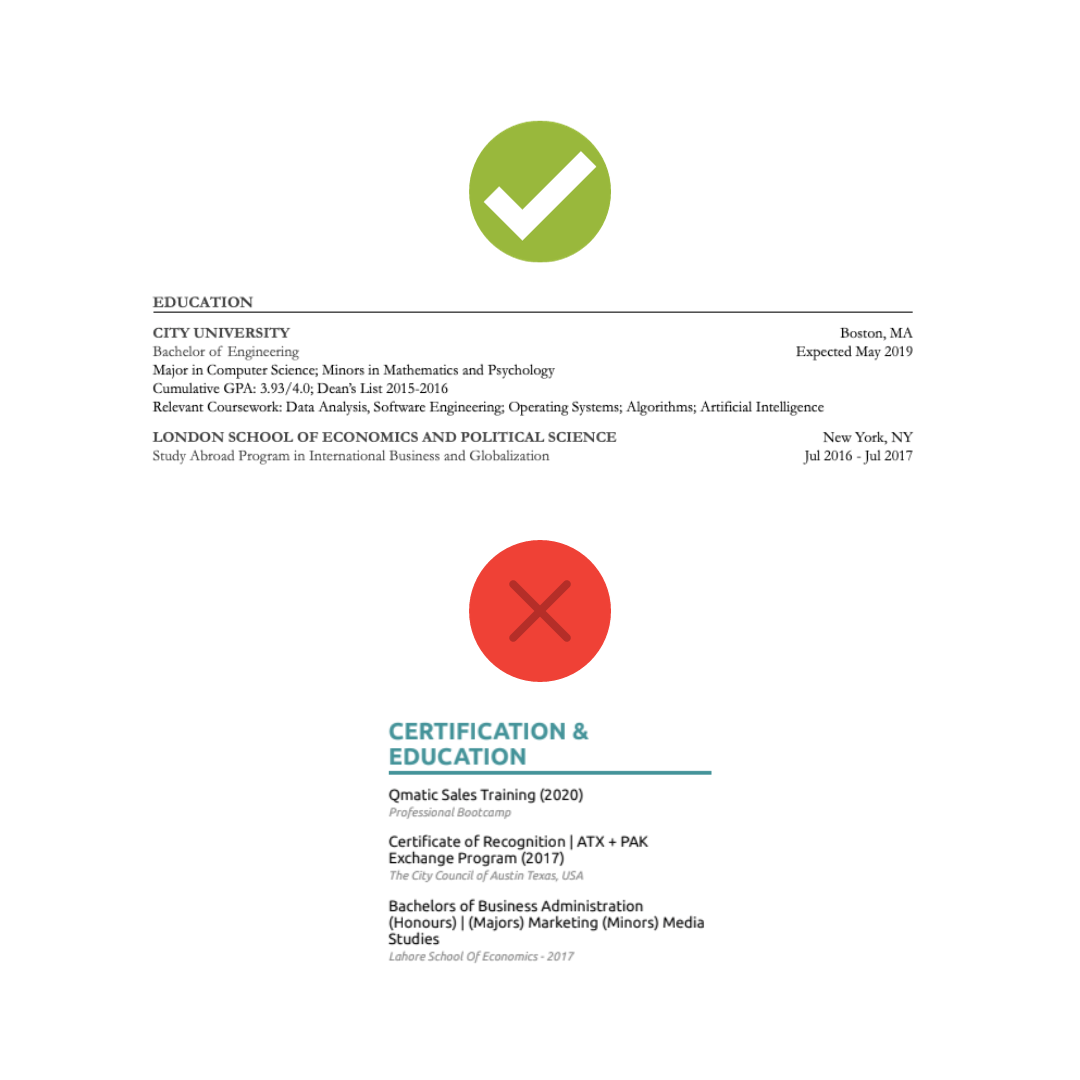
Noteworthy Accomplishments
The accomplishments section of your resume can be a powerful tool, but it requires careful consideration. If you don't have significant accomplishments that are relevant and professional, it's advisable to omit this section entirely. The key is to ensure that what you include truly represents notable achievements that reflect well on your professional image.
When selecting accomplishments to include, consider the following guidelines:
- Relevance to the Job: Choose accomplishments that are relevant to the role you are applying for. Highlighting achievements that align with the job's requirements or the company's values can make a strong impact.
- Professionalism: Ensure that the accomplishments you list are professional and mature. Avoid personal achievements that don't translate to a professional setting.
- Quantifiable Achievements: Where possible, include accomplishments that can be quantified or measured, such as awards, recognition, promotions, or specific project successes.
- Brevity and Clarity: Keep the descriptions brief yet clear. Use concise language to convey the significance of each accomplishment without excessive detail.
- Avoiding Overstatement: Be honest and avoid exaggerating your role in an achievement. Authenticity is crucial, as any embellishments can be easily spotted and may harm your credibility.
This section should succinctly showcase your professional successes in a way that adds value to your resume, demonstrating why you are an excellent candidate for the position. If you decide to include an accomplishments section, make sure it enhances your overall profile and strengthens your candidacy.
Here’s an example that you can follow:
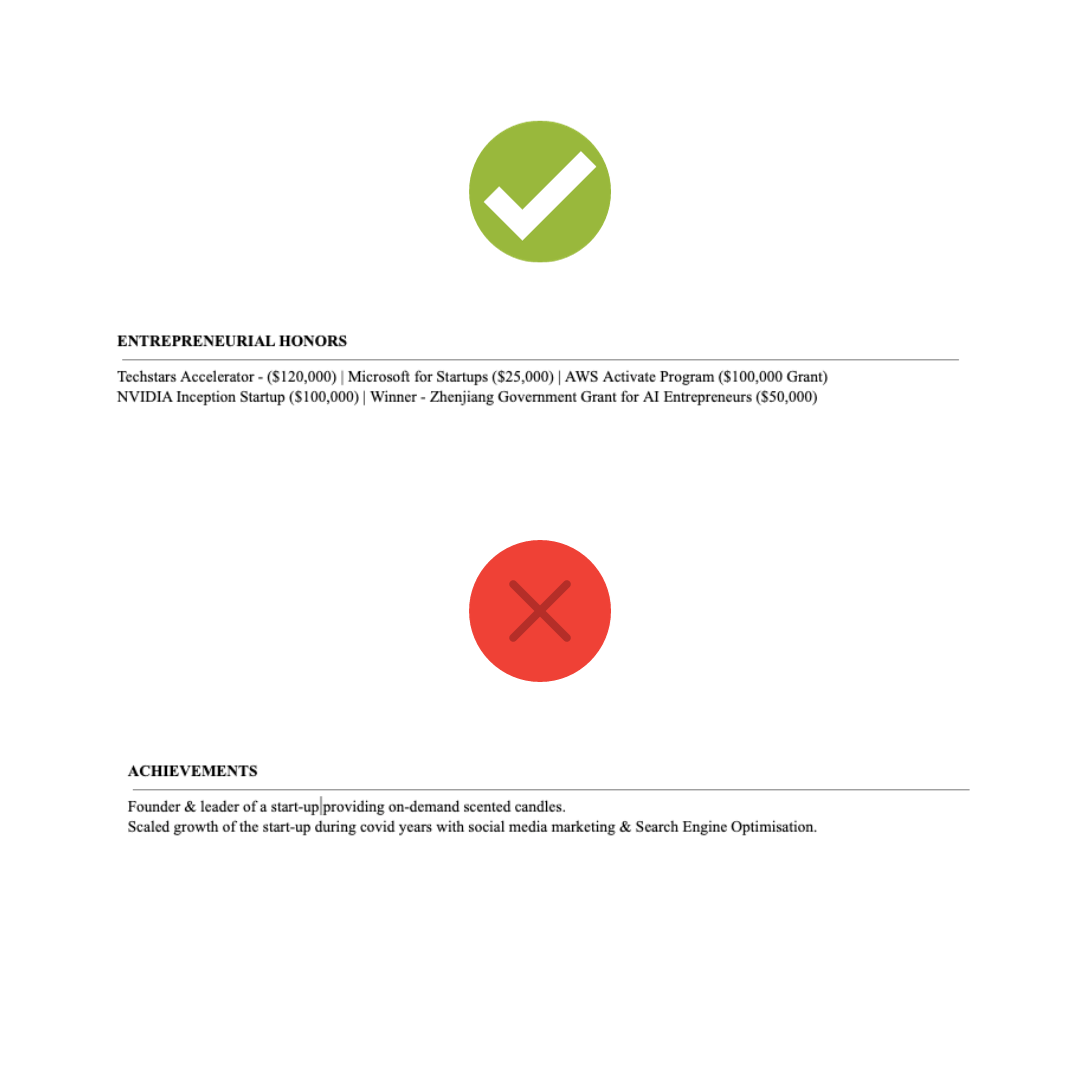
Skills
The skills section is an essential part of your resume, but it requires a strategic approach. It's not the number of skills you list that counts, but the relevance and specificity of each one. Avoid generic skills like 'Microsoft Office,' unless you can specify a high level of expertise, such as 'Advanced level macros and VBA in Microsoft Excel'. This shows specificity and signals your skill level.
- Tailoring to the Job Description: Review the job description carefully and highlight skills that directly relate to the requirements listed. This demonstrates that you are a suitable match for the role.
- Incorporating Soft Skills: Include relevant soft skills like communication, leadership, and problem-solving. These are important across various roles and industries and can be especially crucial if you're changing career paths.
- Highlighting Transferable Skills: If you're switching industries, focus on skills that are applicable in different fields. Skills like project management, customer service, or analytical thinking can be valuable in multiple contexts.
- Detailing Technical Skills: For technical roles, clearly list your technical expertise, including programming languages, software, and tools you're proficient in. Be specific about your level of expertise with each skill to give a clear picture of your capabilities.
- Organizing and Prioritizing: Organize your skills in a way that prioritizes the most relevant and impressive ones at the top. This ensures that recruiters see your strongest assets first.
By carefully selecting and presenting your skills, you make it easy for employers to see how your abilities align with their needs. This section should be a concise showcase of your most marketable skills, tailored to the specific role you are applying for.
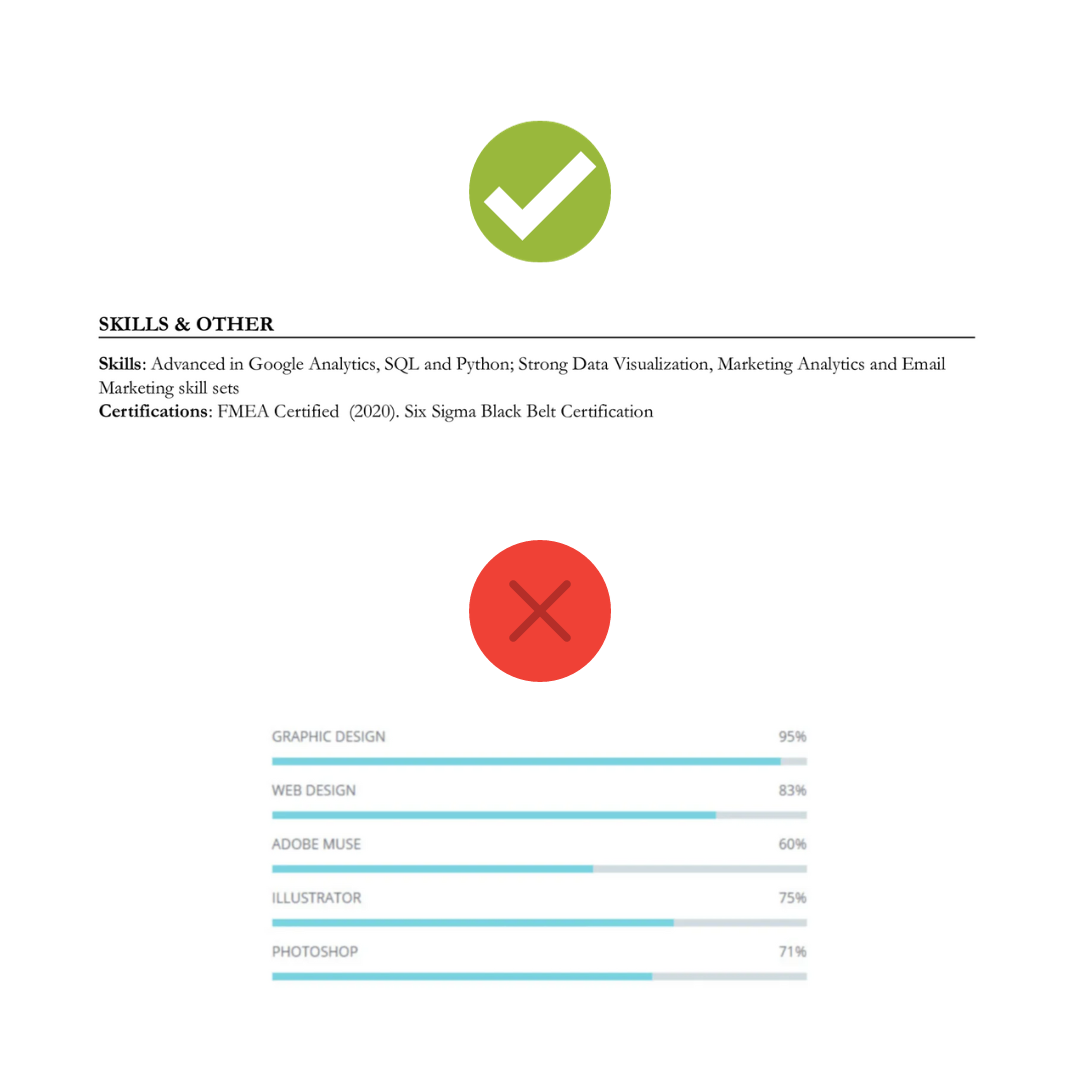
Final Tips
- Customize for Each Role: Tailor your skills section for each application based on the job description.
- Use Keywords: Many companies use Applicant Tracking Systems (ATS) that scan for specific keywords. Make sure your resume includes keywords from the job listing.
- Keep It Relevant: Only include skills that are relevant to the job. Irrelevant skills can distract from your key qualifications.
- Be Honest: Only list skills that you are confident in. Misrepresenting your skills can lead to challenges in the role.
Conclusion
In conclusion, crafting an effective resume is a skill that demands attention to detail and a deep understanding of what recruiters are looking for. Remember to keep your resume simple, tailored, and relevant.
Start by structuring it clearly with a professional heading, a concise work experience section, an impactful education segment, and if applicable, a thoughtful accomplishments section. Ensure your skills section is specific, relevant, and aligned with the job description.
Avoid common pitfalls like overloading with unnecessary information or underestimating the power of a well-organized resume.
Finally, customize your resume for each role, using keywords from the job listing, and always be honest about your skills and experiences. By following these steps, you'll significantly enhance your chances of standing out in a crowded job market and moving one step closer to landing your desired role.
Thank you for reading.
If you liked the content, don’t forget to share it with your friends. And if you want to learn more, connect with me on LinkedIn.
— Raheel.
